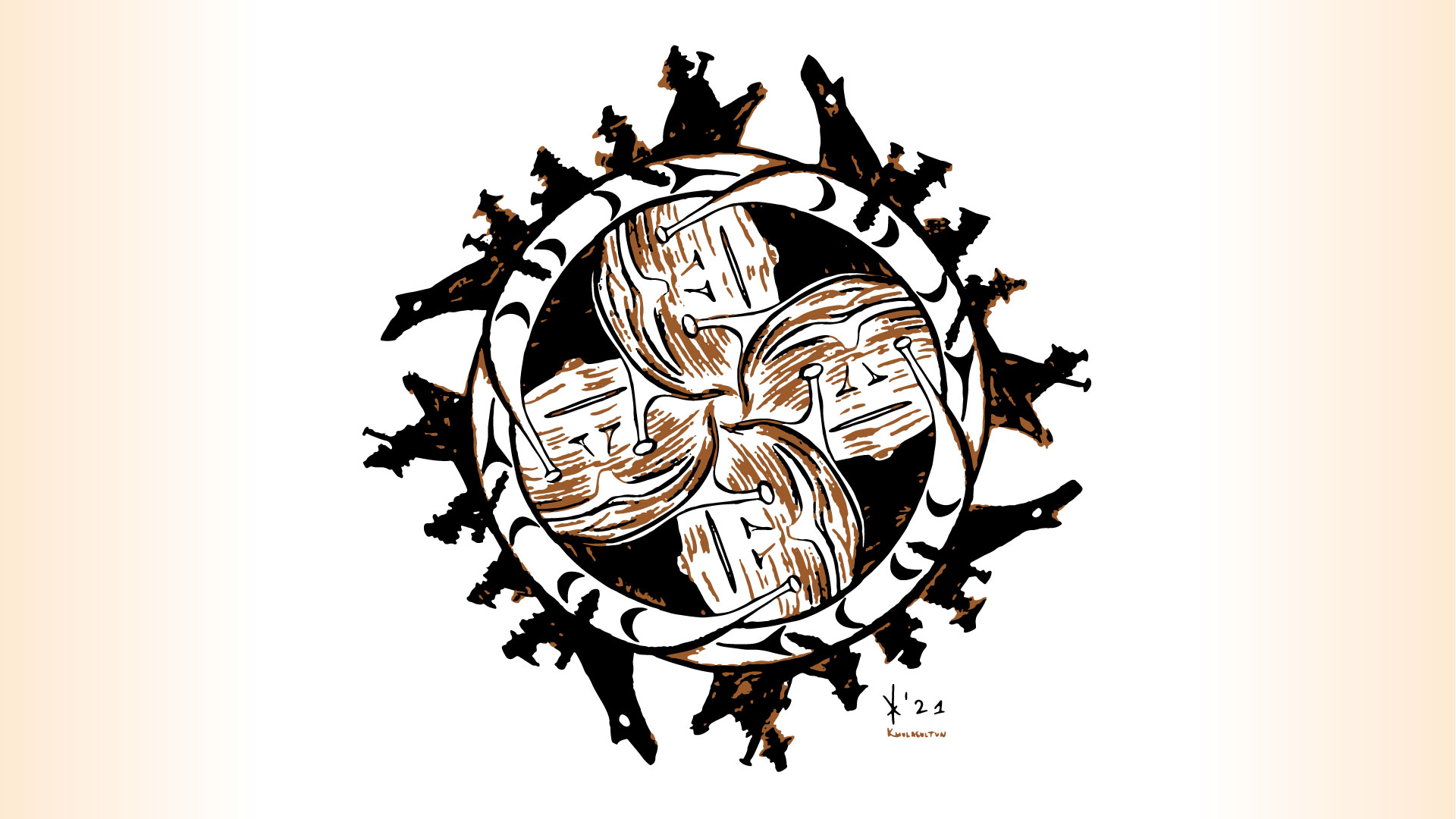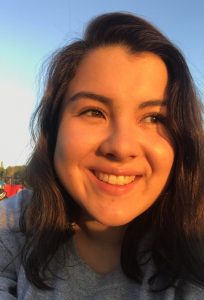
‘Truth,’ by Eliot White-Hill (2021)
Observed on September 30, Orange Shirt Day is a day to reflect on the legacy of Canada’s residential schools. You’ve likely heard about residential schools, but do you know the history behind Orange Shirt Day? Read on to learn more about residential schools and their impact, the story behind Orange Shirt Day, and how you can do your part to engage in meaningful reconciliation.
Content warning
Some details of this article may be distressing to readers, including mentions of abuse and death. For support, students are encouraged to consult UBCO Health and Wellness or access the Student Assistance Program, which provides 24/7 counselling services for UBCO students.
Those affected by residential schools can contact the Indian Residential School Survivors Society or the KUU-US Crisis Line Society for 24/7 crisis support. HealthLink BC also provides recommendations for mental health supports available to the general public.
What are residential schools?
Officially operating from the 1880s up until 1996, residential schools were Canadian governmental institutions run by churches that forcibly separated Indigenous children from their families in attempt to eradicate Indigenous cultures.
Despite their name, residential “schools” were hardly schools at all, but were rather places to indoctrinate Indigenous children into Western colonial society and religion. Rather than receiving an adequate education, students were abused by staff and disallowed from practicing their culture or speaking their language.
Duncan Campbell Scott, a former Canadian politician who played a large part in expanding the residential school system, was once quoted as saying he wanted to “get rid of the Indian problem”, a stark summary of its goal.
Because of their explicit objective to systemically eradicate Indigenous culture and people, residential schools are a form of genocide.
Many children died at residential schools. The issue was brought into the public eye this past May when the remains of 215 children – some as young as three years old – were uncovered on the grounds of Kamloops Indian Residential School following an investigation initiated by the Tk’emlúps te Secwépemc .
Since that time, several more investigations have been launched into former residential school sites across Canada. As of September 16, 2021, over 1800 graves have been uncovered.
What is Orange Shirt Day?
Orange Shirt Day was started by Phyllis Webstad, a residential school survivor from the Stswecem’c Xgat’tem First Nation (located roughly 4 hours northwest of Kamloops). In 1973, Phyllis’s grandmother bought her a brand-new orange shirt for her first day of school. When 6-year-old Phyllis arrived at the St. Joseph Mission residential school wearing her new shirt, it was immediately stripped from her.
As Phyllis recounts, “When I got to the Mission, they stripped me, and took away my clothes, including the orange shirt! I never wore it again. I didn’t understand why they wouldn’t give it back to me, it was mine! The colour orange has always reminded me of that and how my feelings didn’t matter, how no one cared and how I felt like I was worth nothing. All of us little children were crying and no one cared.”
Since 2013, Orange Shirt Day is observed annually in Canada each September 30 to commemorate victims and survivors of Indian Residential Schools. Inspired by Phyllis’s story, orange shirts are worn to call awareness to the harmful legacies of residential schools and affirm that every child matters.
This year, Canada nationally declared September 30 as a federal holiday, the National Day for Truth and Reconciliation. This date is meant to acknowledge the history of residential schools and honour the victims and survivors of residential schools, as well as their families and communities.
What can I do to support residential school survivors as a non-Indigenous person?
Feel free to wear your own orange shirt on September 30, or purchase one from an independent Indigenous seller. orangeshirtday.net sells the official Orange Shirt Day shirt, with partial proceeds going toward the Orange Shirt Society.
Beyond participating in Orange Shirt Day, here are some things you can do to help support residential school victims and survivors.
Educate yourself
Educating yourself on residential schools and their legacies is an important first step — it is important to acknowledge truth before you can engage in meaningful reconciliation. When looking to learn more about residential schools, don’t ask Indigenous folks to educate you. Consider that this is a highly traumatic topic for both survivors and non-survivors alike. There are plenty of educational materials is available for you to learn more.
A great place to start is by reading the Final Report of the Truth and Reconciliation Commission of Canada. Read the summary of the Final Report here, or its full version here. Contained within this report are a series of action items that are key to repairing the harmful impact of residential schools; use these to help guide your own reconciliation work.
Support Indigenous media
There is a wide range of other books, movies, and additional media about residential schools and Indigenous culture. Check out the National Centre for Truth and Reconciliation Archives for a database of materials to get you started.
To learn more about Indigenous perspectives, try adding more Indigenous voices to your daily social media scroll. Check out @indigenous_baddie, @notoriouscree, @tiplerteaches and @tiamiscihk on Instagram, or @martinheavyheadjr, @ciuk.0, and @shinanova on TikTok.
Add INDG courses to your class schedule
No matter your major, INDG courses are a great way to improve your understanding of the diverse Indigenous peoples in Canada and elsewhere.
Donate & Volunteer
Another way to support those affected by residential schools is to get involved with the organizations supporting survivors and their families. The Indian Residential School Survivors Society and the KUU-US Crisis Line Society are both registered charities providing crisis counselling and other services to residential school survivors. As well, consider volunteering with Indigenous organizations, such as the Ki-Low-Na Friendship Society which provides a variety of community-based services.
WRITTEN BY BETHANY KOLISNIAK
 About the author
About the author
Bethany Kolisniak is a Microbiology major from Winnipeg, Manitoba. In her spare time, you can find her playing the guitar, going for hikes, or making balloon animals. She is passionate about advancing equity in healthcare and hopes to do so in her future career, whatever it may turn out to be.
Thank-you Bethany for writing this essay…..it does help me to understand that time of life….I grew up in a small town in Alberta (and I’m 77yrs. now) and quite frankly it never dawned on me why we didn’t have Indigenous kids in our classes .
When were the Residential Schools started….what year ?.